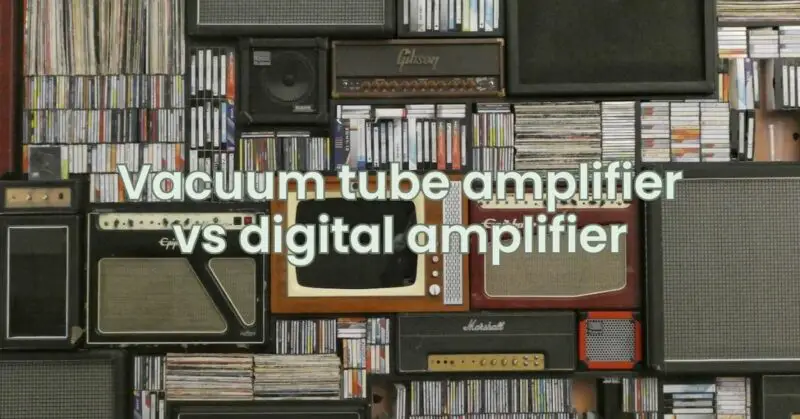In the realm of audio amplification, two distinct technologies have captured the imagination of audiophiles and music enthusiasts alike: the vacuum tube amplifier and the digital amplifier. Both types of amplifiers have their unique strengths and characteristics, catering to different preferences and priorities. In this article, we will compare the sonic charms of vacuum tube amplifiers and digital amplifiers, shedding light on their respective advantages and why they continue to be popular choices in the world of audio.
Vacuum Tube Amplifier: A Timeless Classic
Vacuum tube amplifiers, also known as valve amplifiers, date back to the early 20th century and were widely used until the emergence of solid-state technology in the 1960s. These classic amplifiers operate on the principles of vacuum tubes, which control the flow of electrons within a vacuum to amplify audio signals. Key features of vacuum tube amplifiers include:
- Warm and Harmonic Sound: Perhaps the most celebrated characteristic of vacuum tube amplifiers is their warm and harmonically rich sound. The slight distortion produced by the tubes adds a pleasing musicality to the audio, particularly appealing to audiophiles who enjoy the vintage, analog tonality.
- Natural Compression: When driven to their limits, vacuum tube amplifiers exhibit a gradual and smooth compression, which results in a forgiving and musical distortion. Musicians often appreciate this quality when using tube amps for recording or performance.
- Dynamic Response: Vacuum tubes respond differently to changes in volume and audio signals, providing a more dynamic and expressive sound. This dynamic response contributes to a sense of liveliness and engagement with the music.
Digital Amplifier: Precision and Efficiency
Digital amplifiers, also known as Class D amplifiers, are a relatively newer technology that has gained popularity due to their efficiency and compact size. Unlike vacuum tube amplifiers, digital amplifiers utilize pulse-width modulation (PWM) to amplify audio signals. Key features of digital amplifiers include:
- High Efficiency: Digital amplifiers are known for their high efficiency, often exceeding 90%. This means they waste less power as heat, resulting in cooler operation and reduced power consumption, making them an eco-friendly choice.
- Compact and Lightweight: Digital amplifiers are typically more compact and lightweight than their vacuum tube counterparts. This characteristic makes them suitable for applications where space and weight are critical, such as portable audio devices and car audio systems.
- Precise Reproduction: Digital amplifiers can provide extremely accurate audio reproduction, thanks to the precision of digital signal processing. They offer low distortion and high signal-to-noise ratios, delivering clear and faithful audio reproduction.
Comparison: Warmth vs. Precision
The choice between vacuum tube amplifiers and digital amplifiers ultimately depends on personal preferences and specific use cases. Here’s a brief comparison of their main characteristics:
- Sound Character: Vacuum tube amplifiers are renowned for their warm and harmonic sound, appealing to those seeking a nostalgic, vintage audio experience. Digital amplifiers, on the other hand, provide precise and accurate audio reproduction, catering to audiophiles who prioritize technical accuracy.
- Efficiency: Digital amplifiers excel in efficiency, making them an ideal choice for applications where power consumption and heat dissipation are critical factors. Vacuum tube amplifiers tend to be less efficient and generate more heat during operation.
- Size and Portability: Digital amplifiers’ compact size and lightweight construction make them well-suited for portable audio devices and space-constrained setups. Vacuum tube amplifiers, due to the bulkier tubes and transformers, are generally larger and more suitable for stationary home audio systems.
Conclusion
In the debate between vacuum tube amplifiers and digital amplifiers, there is no definitive winner—both technologies have their merits and cater to different tastes. Vacuum tube amplifiers offer a timeless and nostalgic audio experience with their warm and harmonically rich sound, while digital amplifiers provide precision and efficiency, making them a practical choice for modern applications.
Ultimately, the choice between these two technologies boils down to personal preferences, listening priorities, and the intended usage. Whichever path you choose, both vacuum tube amplifiers and digital amplifiers promise to elevate your audio experience and immerse you in the magic of music.


